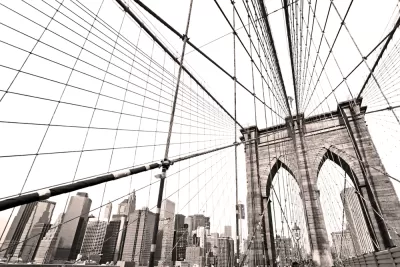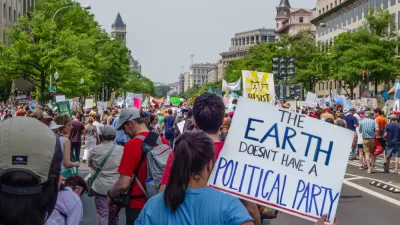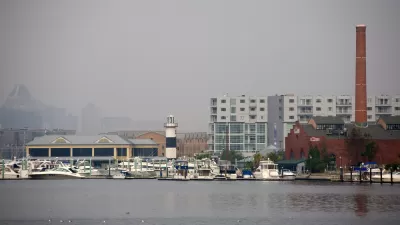An ambitious and innovative infrastructure program can multiply benefits for cities willing to take bold steps.

Kathryn Firth writes an op-ed for Next City:
[A]s conversations continue about the need for a Green New Deal and overdue upgrades to the nation’s infrastructure, we also have a once-in-a-generation opportunity to reimagine the role that infrastructure can serve in cities. Infrastructure should be conceived as a community asset, both providing equitable new public space and contributing to the beauty of cities, at a time where pressure on urban land is at a premium and civic pride often waning.
Firth, urban design director at NBBJ, cites Victorian Era London as an example of society that took advantage of a similar opportunity—same with the Works Progress Administration in the 1930s and 40s in the United States.
As to how the United States, at the dawn of the 2020s, can achieve similar successes in repositioning the role of infrastructure in cities, Firth suggests several strategies, such as celebrating the utilitarian, balancing safety and security with public access, creating productive tension, getting creative with budgets, and engaging the community.
FULL STORY: Formerly Hidden, Beautiful Infrastructure is Now Back in the Limelight

Planetizen Federal Action Tracker
A weekly monitor of how Trump’s orders and actions are impacting planners and planning in America.

Restaurant Patios Were a Pandemic Win — Why Were They so Hard to Keep?
Social distancing requirements and changes in travel patterns prompted cities to pilot new uses for street and sidewalk space. Then it got complicated.

Maui's Vacation Rental Debate Turns Ugly
Verbal attacks, misinformation campaigns and fistfights plague a high-stakes debate to convert thousands of vacation rentals into long-term housing.

In California Battle of Housing vs. Environment, Housing Just Won
A new state law significantly limits the power of CEQA, an environmental review law that served as a powerful tool for blocking new development.

Boulder Eliminates Parking Minimums Citywide
Officials estimate the cost of building a single underground parking space at up to $100,000.

Orange County, Florida Adopts Largest US “Sprawl Repair” Code
The ‘Orange Code’ seeks to rectify decades of sprawl-inducing, car-oriented development.
Urban Design for Planners 1: Software Tools
This six-course series explores essential urban design concepts using open source software and equips planners with the tools they need to participate fully in the urban design process.
Planning for Universal Design
Learn the tools for implementing Universal Design in planning regulations.
Heyer Gruel & Associates PA
JM Goldson LLC
Custer County Colorado
City of Camden Redevelopment Agency
City of Astoria
Transportation Research & Education Center (TREC) at Portland State University
Camden Redevelopment Agency
City of Claremont
Municipality of Princeton (NJ)





























